The first time I walked into a mining site, it wasn’t the noise that struck me — it was the pressure.
Dust, vibration, slopes, and scattered rocks everywhere.
In a place like that, every weakness in a machine gets exposed.
The ones that survive aren’t built for comfort — they’re built for survival.
Rough terrain forklifts1 in mining are used for hauling materials, transporting parts, loading heavy equipment, and clearing debris.
With their strong frames, 4WD systems2, and sealed dust-resistant design3, they can keep working where others break down.
In mining, they’re not support tools — they’re part of the production line.
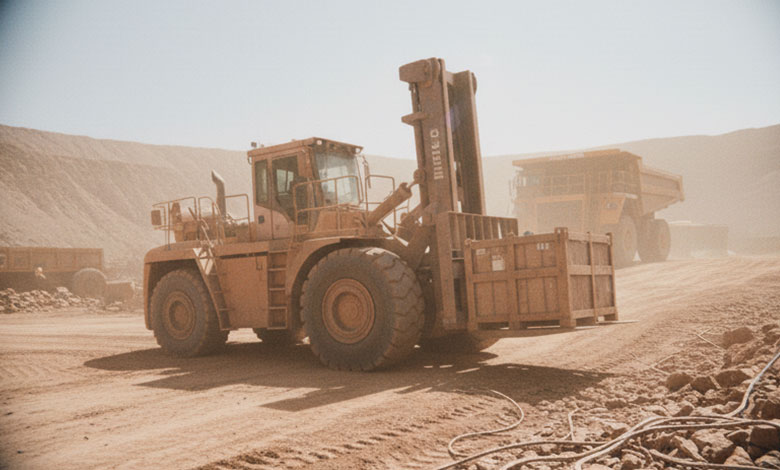
Let me share what I’ve learned from years of working with mining operations4 —
why these forklifts aren’t optional, but essential.
Mining sites aren’t jobsites — they’re endurance tests.
A mining site magnifies every mechanical weakness.
Rough terrain forklifts1 survive where others fail — built to handle rocks, slag, slopes, and constant vibration.
They’re designed not just to perform, but to last.
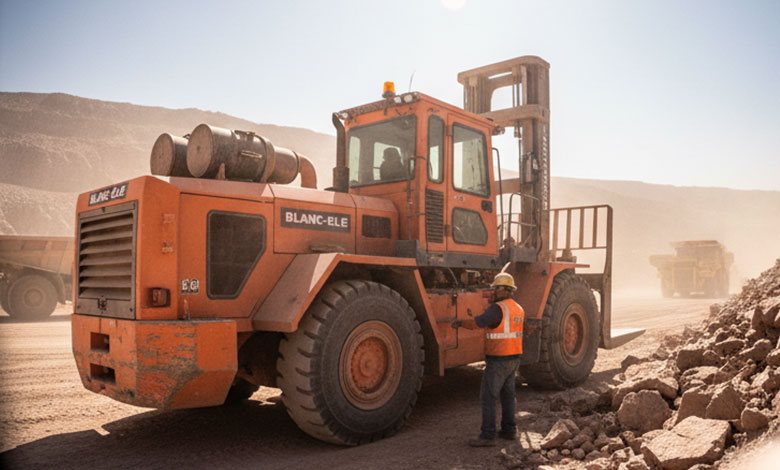
Mining roads are nothing like construction sites.
They’re unstable, uneven, and constantly changing.
A regular forklift’s chassis or suspension loosens within weeks.
A rough terrain forklift, with reinforced frames, thicker axles, and heavy-duty suspensions5, absorbs impact and endures daily punishment.
It’s not about looking strong — it’s about staying alive.
| Environmental Challenge | Standard Forklift | Rough Terrain Forklift |
|---|---|---|
| Rocky Surface | Slips easily | Strong traction |
| Slopes | Prone to tilt | Reinforced structure |
| Vibration | Loosens components | Shock-absorbing design |
| Lifespan | 2–3 years | 5+ years |
In mining, uptime equals profit.
Every minute of downtime in a mine costs real money.
A rough terrain forklift’s true value lies in reliability6 — its ability to operate continuously under heavy loads and harsh conditions.
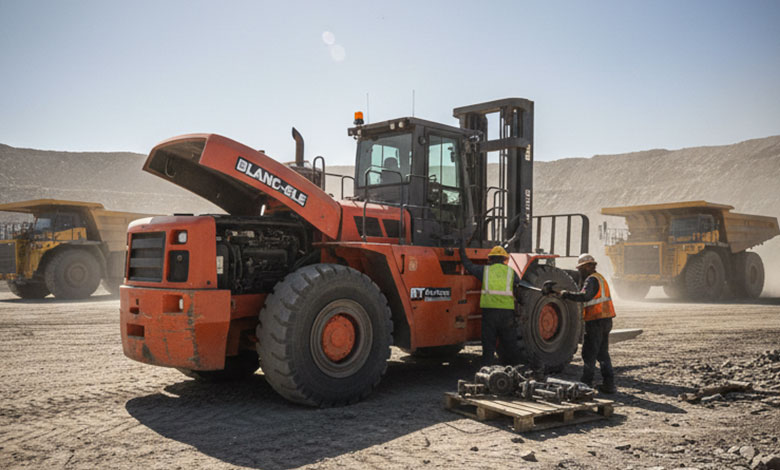
Mining operations often run 24/7 with limited maintenance crews.
That’s why equipment uptime directly determines profitability.
Rough terrain forklifts1 are built with improved hydraulic systems, cooling units, and drivetrains designed for continuous use.
At BLANC-ELE7, our RT Series uses a modular structure8 so parts can be replaced quickly in the field — no waiting days for service.
| Performance Factor | Standard Forklift | Rough Terrain Forklift |
|---|---|---|
| Continuous Operation | Limited | Designed for 24/7 work |
| Downtime | Frequent | Minimal |
| Monthly Uptime | 75–80% | 95%+ |
| Repairability | Complex | Modular & field-repairable |
It’s not about how much you lift — it’s where you can lift it.
In mining, ground conditions are often harder than the work itself.
Rough terrain forklifts1 use 4WD systems2, heavy-duty tires, and high ground clearance9 to move confidently across slag, gravel, and uneven surfaces.
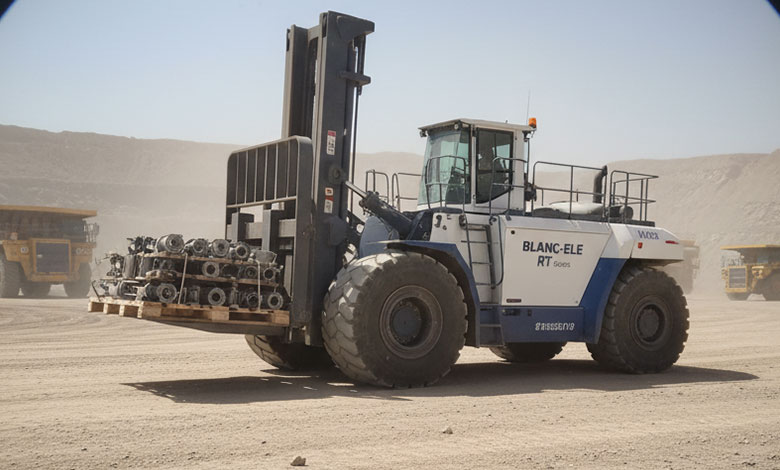
Mining roads are full of debris and sharp materials.
A standard forklift’s tires can fail within hours.
Rough terrain models use puncture-resistant deep-tread tires10 and locking differentials to maintain grip on mixed terrain.
In short — it’s not about lifting heavy loads, it’s about reaching the heavy loads safely.
| Feature | Standard Forklift | Rough Terrain Forklift |
|---|---|---|
| Tire Type | Solid / small | Puncture-resistant deep tread |
| Ground Clearance | 120 mm | 300 mm+ |
| Drive System | 2WD | 4WD with differential lock |
| Terrain Adaptability | Limited | Excellent |
Dust destroys more machines than rocks do.
Most mining machines don’t die from impact — they die slowly from dust.
Rough terrain forklifts1 are designed with sealed cabins, multi-layer filters11, and independent cooling systems to fight dust infiltration.
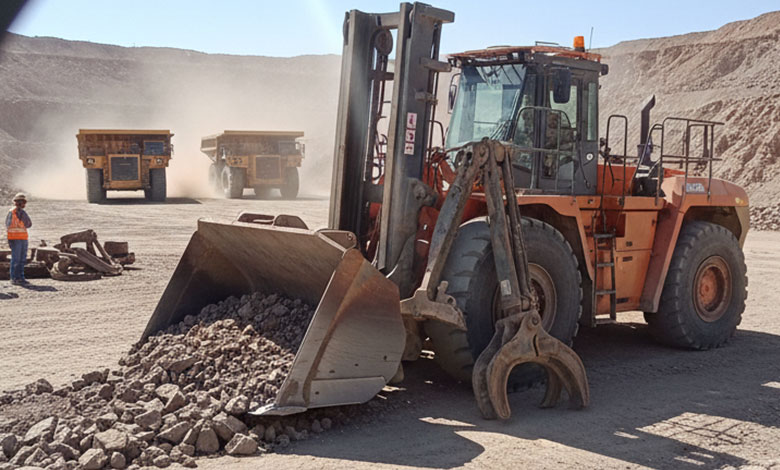
Mining dust is fine, abrasive, and corrosive.
It clogs filters, contaminates hydraulic oil, and damages wiring.
Our BLANC-ELE7 RT Series is built with IP65-level sealing, dual air filtration, and anti-corrosion components to resist that hidden enemy.
That’s why our clients report longer service life and lower maintenance costs — even in open-pit mines.
| Risk Factor | Standard Forklift | Rough Terrain Forklift |
|---|---|---|
| Air Filtration | Single layer | Dual high-efficiency filter |
| Wiring Seal | Weak | Fully protected |
| Hydraulic Contamination | High risk | Dust-proof system |
| Lifespan | Shortened | Extended by 30–40% |
In mining, one forklift often does the work of three machines.
Mines demand machines that can do more than one job.
Rough terrain forklifts1 can handle multiple roles — loading, lifting, hauling, or cleaning — simply by changing attachments.
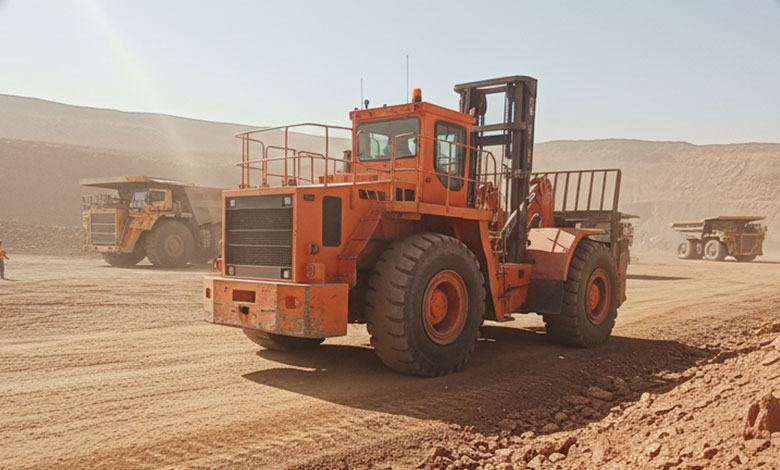
One RT forklift can be equipped with:
- A boom arm for equipment lifting;
- A bucket for clearing debris;
- A clamp for handling raw material barrels;
- A platform for moving spare parts.
This flexibility12 reduces the number of machines needed on-site and simplifies maintenance and training.
| Application | Task | Typical Attachment |
|---|---|---|
| Lifting | Equipment transport | Boom / hook arm |
| Material Handling | Barrels, pallets | Forks / clamps |
| Cleaning | Waste, gravel | Bucket |
| Transport | Tools, cables | Flat platform |
Electric rough terrain forklifts are entering open-pit mines.
Mining operations are changing — emission and noise standards are getting stricter.
Electric rough terrain forklifts are now being adopted in open-pit mines for their low noise, zero emissions, and reduced maintenance.
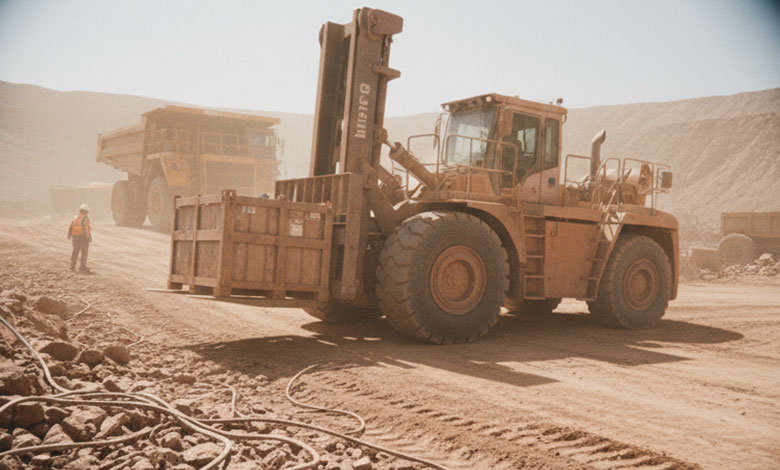
Open-pit mines are well-ventilated with shorter travel distances — perfect for electric models.
Our BLANC-ELE7 Electric RT Series combines high-torque motors with fast-charging batteries that last over eight hours per shift.
They’re quiet, clean, and still powerful enough for rough terrain — a small step toward sustainable mining.
| Feature | Diesel Forklift | Electric Rough Terrain Forklift |
|---|---|---|
| Noise | High | Very low |
| Emissions | CO₂ + fumes | Zero |
| Maintenance | Frequent | Minimal |
| Run Time | Unlimited | 6–8 hours per charge |
Conclusion
In mining, rough terrain forklifts aren’t “support machines” — they’re lifelines.
They keep production moving through dust, rock, and slopes when everything else slows down.
They don’t just carry materials — they carry the continuity of an entire operation.
Explore how rough terrain forklifts enhance efficiency and safety in challenging mining environments. ↩
Understand how 4WD systems improve traction and stability in challenging mining conditions. ↩
Find out how dust-resistant designs prolong equipment life and reduce maintenance costs in mining. ↩
Learn about the critical role of specialized equipment in maximizing productivity and safety in mining. ↩
Learn how heavy-duty suspensions enhance durability and performance in rugged mining environments. ↩
Discover why reliability is crucial for minimizing downtime and maximizing profits in mining operations. ↩
Explore this link to discover how BLANC-ELE forklifts enhance mining operations with durability and efficiency. ↩
Discover how modular structures facilitate quick repairs and reduce downtime in mining operations. ↩
Find out how increased ground clearance enhances maneuverability and safety in uneven mining terrains. ↩
Explore the benefits of specialized tires in preventing failures and ensuring safety on mining sites. ↩
Understand the importance of advanced filtration systems in extending the life of mining machinery. ↩
Explore how versatile equipment can streamline operations and reduce the need for multiple machines. ↩
